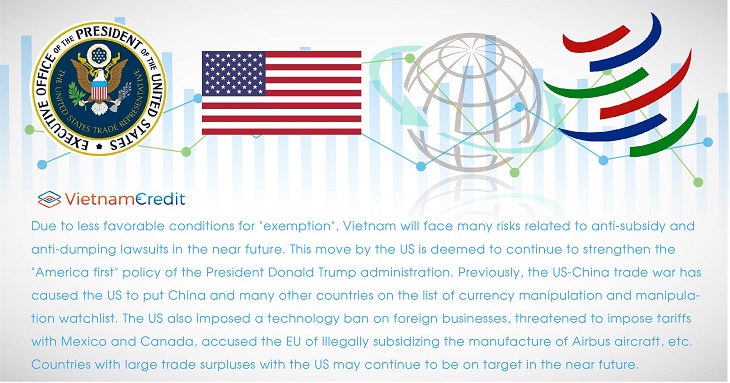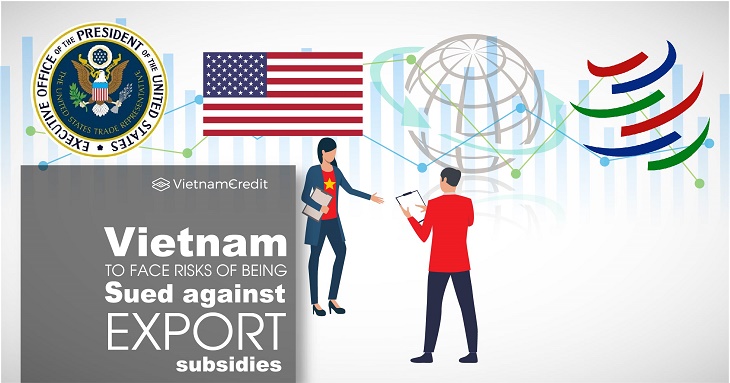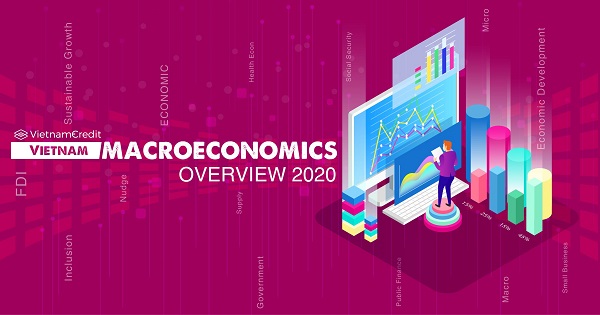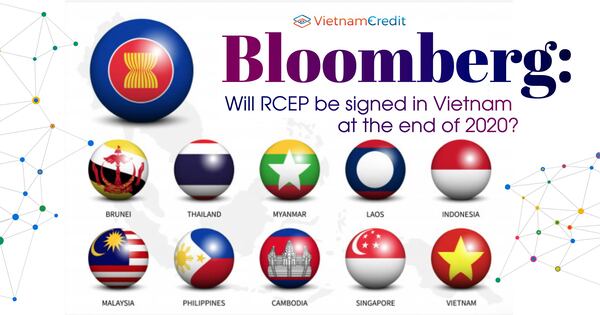Under the new US rules, the United States Trade Representative (USTR) will classify developed and developing countries according to its own criteria.
One of the new criteria that USTR has added is the proportion of trade.
New classification of USTR
On February 10, 2020, the US made an official announcement to update the list of developing and least-developed countries in the anti-subsidy tax law. Specifically, the US decided to abolish the old regulations on national classification under the World Trade Organization (WTO) in order to apply anti-subsidy tax law.
Under the new rules, USTR will classify countries according to its own criteria. Under the WTO classification, a country with Gross national income per capita (GNI per capita) below USD12,375 will be considered a developing country.
However, USTR stated that if one country wants to be on this list, in addition to the criterion of per capita income of less than USD 12,375, that country must satisfy other conditions of trade and membership. In addition, the WTO classification takes into account social development indicators such as infant mortality, illiteracy rate, life expectancy, etc., while the USTR does not take these into account. It is this change in the new classification that makes some countries like Vietnam, China, India and Indonesia no longer on the list of developing countries, according to USTR. One of the other conditions that USTR has added is the proportion of trade.
Specifically, a country with a share of world trade above 0.5% (according to WTO regulation, it must be 2%) will be considered a developed country. Accordingly, Vietnam's merchandise import-export ratio in total world trade was about 2.5% in 2018 (data from the WTO), which definitely met the criteria above. However, the most notable point is that the updating of this list by USTR will only take effect in anti-subsidy tax law. This list will not affect the country classification in other laws of the US.
Therefore, the impact of this new update will be limited to imposing US countervailing duties without affecting other incentives enjoyed by Vietnam or other developing countries. In general, Vietnam will lose the benefits in terms of subsidy and dumping that developing and least developed countries may have, such as the threshold to be "exempted" from anti-subsidy investigation will be lowered.
Specifically, Vietnam will not be "exempted" from investigation under the anti-subsidy tax law if the margin of subsidy is over 1% (for developing countries, this threshold will be 2%) or the import turnover of a commodity from Vietnam accounts for over 3% (for developing countries, this threshold will be 4%) of the total import turnover of that item into the US.
Due to less favorable conditions for "exemption", Vietnam will face many risks related to anti-subsidy and anti-dumping lawsuits in the near future. This move by the US is deemed to continue to strengthen the "America first" policy of the President Donald Trump administration.
Previously, the US-China trade war has caused the US to put China and many other countries on the list of currency manipulation and manipulation watchlist. The US also imposed a technology ban on foreign businesses, threatened to impose tariffs with Mexico and Canada, accused the EU of illegally subsidizing the manufacture of Airbus aircraft, etc.
Countries with large trade surpluses with the US may continue to be on target in the near future.

Impact on exports of some industries
Some industries that may be directly affected by anti-subsidy and anti-dumping regulations of the US are seafood and textiles. For seafood products, the US is currently the largest market of Vietnam (accounting for more than 17%) with two main products including shrimp and catfish.
Without the new regulation of USTR, both of the above items have always faced anti-dumping investigations by the US in the past years. The fishery industry is expected to face many difficulties in 2020 when the widespread Covid-19 epidemic in China will affect the seafood consumption demand.
While businesses in the industry can respond by increasing orders to other markets such as the EU or US to offset the decline of the Chinese market, it will not be easy because these markets still tend to be reserved, placing orders in moderation to wait for prices to fall. For the textile and apparel industry, strengthening the legal basis for conducting anti-subsidy and anti-dumping investigations may reduce the pressure for reduction of prices of synthetic fibers on the world market.
Recently, Chinese yarn companies are said to have received subsidies from the Chinese government, leading to continuous dumping in foreign markets. The recovery of synthetic fiber prices (if any, due to China not daring to aggressively reduce prices anymore) may support the business results of yarn manufacturing enterprises in Vietnam such as Century Synthetic Fiber Corporation in the medium term.
However, it should be noted that anti-subsidy and anti-dumping lawsuits often take a lot of time to investigate and compromise between the parties. Moreover, Vietnam does not have many yarn manufacturers like STK.
>> Vietnam’s economic overview in February 2020
Source: thesaigontimes
























































